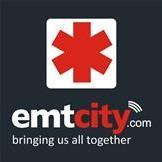June 05--LONGMONT -- A city-run ambulance service could generate up to $480,000 in its first year, if the billing assumptions are correct, emergency manager Dan Eamon told the Longmont City Council on Tuesday.
The city has been looking at whether to stay with its current ambulance service -- American Medical Response -- or to go it alone, as part of a larger discussion on improving how Longmont's health services are provided. Specific options still are being worked out, Eamon said, but they fall into four general categories:
Keep a private carrier under the current contract terms.
Keep a private carrier under different contract terms.
Use a city-run service, but hire new personnel to run it, estimated to have a net income of $40,000 in the first year.
Use a city-run service, but re-assign existing personnel to run it, estimated to have a net income between $430,000 and $480,000 in the first year.
The trick, both Eamon and Public Safety Chief Mike Butler noted, is in the collection rate. In services reviewed by the city, the amount collected on bills ranged from 32 to 83 percent; Longmont's model was built on a 40 percent assumption.
"That's why we're still looking at it," City Manager Harold Dominguez said. "Those assumptions are critical to these decisions."
AMR's contract runs out Oct. 31, but can be renewed under its existing terms for one year.
Hank McCarthy of the Longmont Professional Firefighters Association
said a formal statement from the union would be issued later.
"We're certainly concerned about what we've heard tonight," he said.
Butler said the option of re-assigning personnel would not result in cutting one fire engine, a possibility that had been discussed earlier.
Regardless of the provider, the plan calls for a "tiered response" to calls, where the number of vehicles and personnel sent to a call could vary depending on how bad the situation was. Serious calls such as
a heart attack, would still get a fire engine and ambulance running "emergent" (sirens blaring), while a low-priority response might get one ambulance running non-emergent.
The overall "Longmont Community Health Network," a collaboration of public and private health agencies, has been working on ways to cut health care costs and increase access to medical services. That includes providing more intensive in-home care to the residents most in need of it and directing fewer cases to Longmont United Hospital's emergency room.
Some of the initiatives suggested by the plan include having the city's "urgent care" clinics open from 6 p.m. to 9 p.m. -- a time slot that accounts for 25 percent of the ER's cases -- or having a paramedic work with Salud's volunteer teams to help provide follow-up care.
"We're looking to connect things that already exist," Eamon said. "We're not creating a new system."
Scott Rochat can be reached at 303-684-5220 or srochat@times-call.com.
___
©2013 the Daily Times-Call (Longmont, Colo.)
Visit the Daily Times-Call (Longmont, Colo.) at www.timescall.com
Distributed by MCT Information Services
A service of YellowBrix, Inc.


Recommended Comments
There are no comments to display.
Join the conversation
You can post now and register later. If you have an account, sign in now to post with your account.
Note: Your post will require moderator approval before it will be visible.